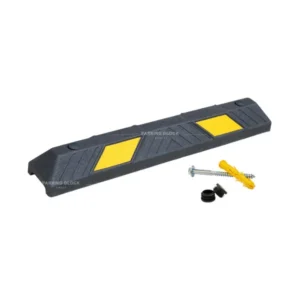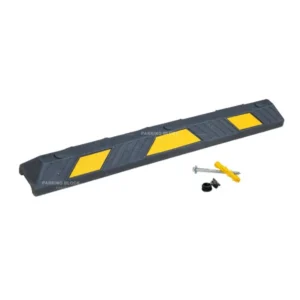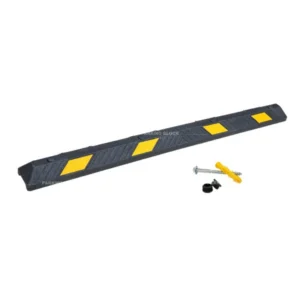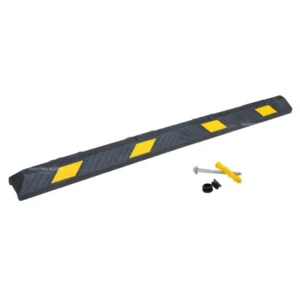Factors to Consider Before Buying Parking Curb Stops
Parking curb stops, also known as wheel stops or parking bumpers, are essential accessories for any parking lot or garage. They are a physical barrier preventing cars from driving too far forward and potentially damaging other vehicles, buildings, or pedestrians.
However, with so many types of parking curb stops available on the market, it can be challenging to know which one to choose. This article will explore four factors to consider before buying a parking curb stop.

Discover here our full range of Parking Stops!
What parking curb stop dimensions do you need?
The dimensions of parking curb stops can vary depending on the specific requirements and regulations of different regions or parking facilities.
However, I can provide you with some general guidelines regarding parking curb stop dimensions:
Length
The typical length of a parking curb stop is around 2 to 6.5 feet (550mm to 2000mm). This length allows it to effectively stop a vehicle from rolling past the designated parking space.
Height
The height of a parking curb stop is typically around 4 to 6 inches (10 to 15 centimeters). This height is sufficient to provide a visible barrier and prevent vehicle tires from crossing onto the sidewalk or other restricted areas.
Width
The width of a parking curb stop is commonly around 6 to 8 inches (15 to 20 centimeters). This width provides stability and ensures that the curb stop stays firmly in place when a vehicle comes into contact with it.
It’s important to note that these dimensions are approximate and can vary depending on local regulations and specific parking requirements. If you have a particular location or project in mind, I recommend consulting local building codes or authorities to obtain accurate and up-to-date information on parking curb stop dimensions for your specific area.
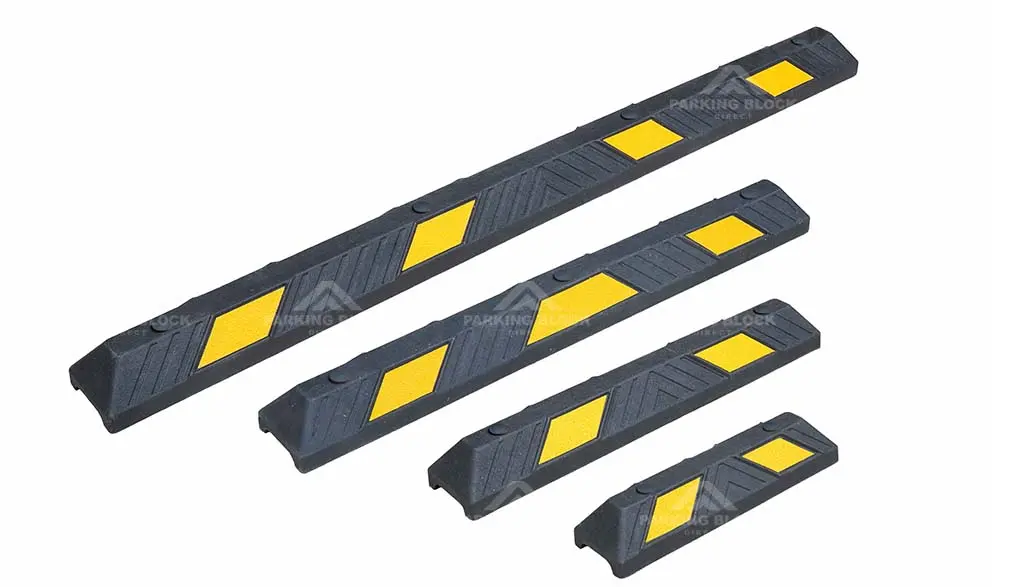
What are the different types of parking blocks?
Several types of parking blocks or curb stops are available, each designed to serve specific purposes and accommodate different needs.
Here are two common types of parking blocks:
Car wheel stops
Car wheel stops, also known as parking curb stops, are devices used to secure a parked vehicle to prevent it from rolling or moving unexpectedly. They are set before the vehicle’s wheels for solidness and forestall development. Car wheel stops are a fundamental security measure in business and modern settings.
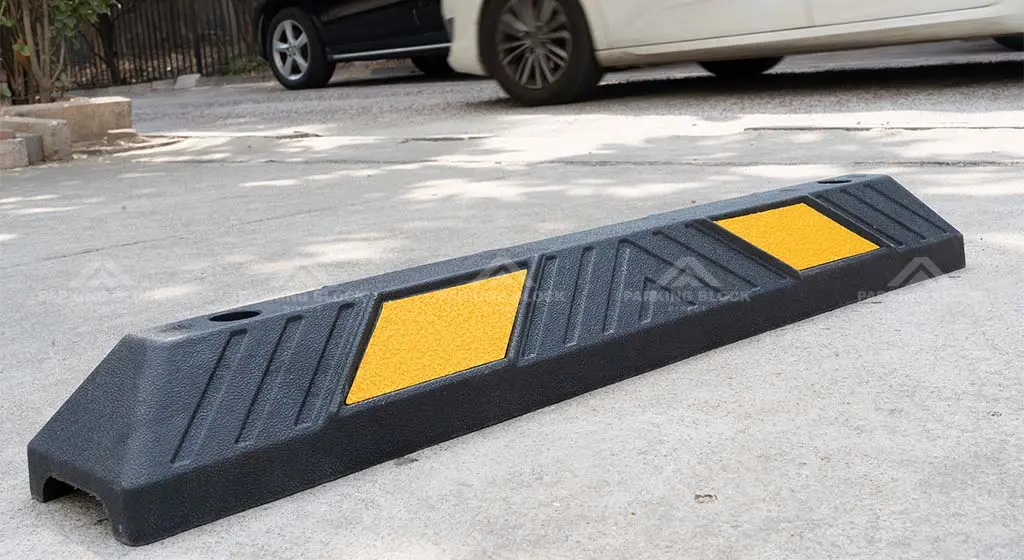
Truck wheel stops
Truck wheel stops, also known as wheel chocks or bus wheel stops, are devices to secure a parked bus and prevent it from rolling or moving unexpectedly. They are typically made of durable materials such as rubber, recycled plastic or Plastic-Rubber composite.
They are placed behind the bus’s wheels to stabilize and prevent movement. Truck wheel stops are an essential safety measure, especially in commercial and industrial settings, where many trucks or buses are parked for extended periods.
As car wheel stops, several types of bus wheel stops are available, including rubber, plastic, Plastic-Rubber composite, concrete, and steel…
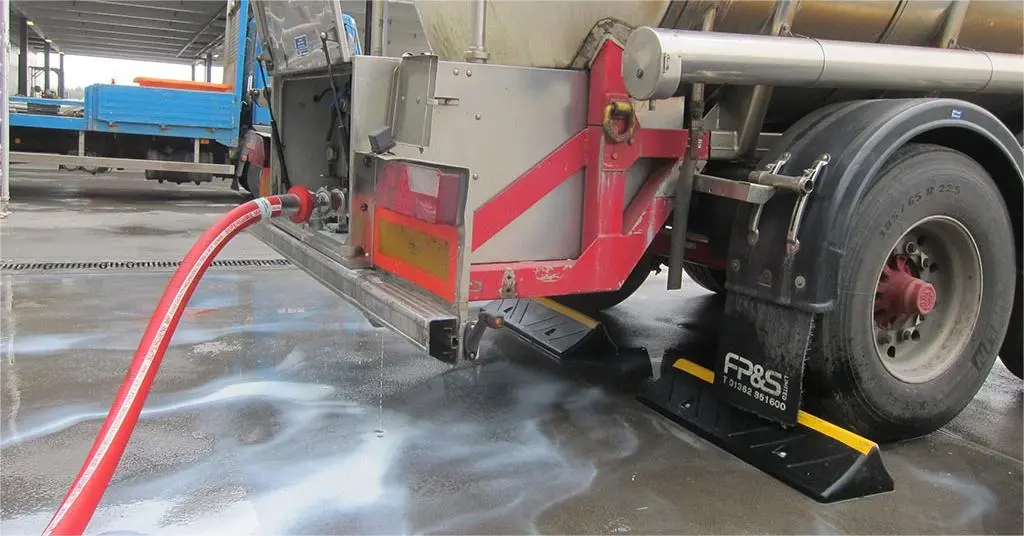
If you want to know more about this topic, feel free to discover here: What Are the Different Types of Parking Stops?
Different locations that wheel stops are mainly used at
Wheel stops or parking curb stops are commonly used in various locations to assist with parking management and ensure proper vehicle positioning. Some of the main locations where wheel stops are used include:
Parking Lots
Wheel stops are widely used in commercial and residential parking lots to define parking spaces and prevent vehicles from rolling too far forward or backward. They help in maximizing space utilization and maintain an organized parking layout.
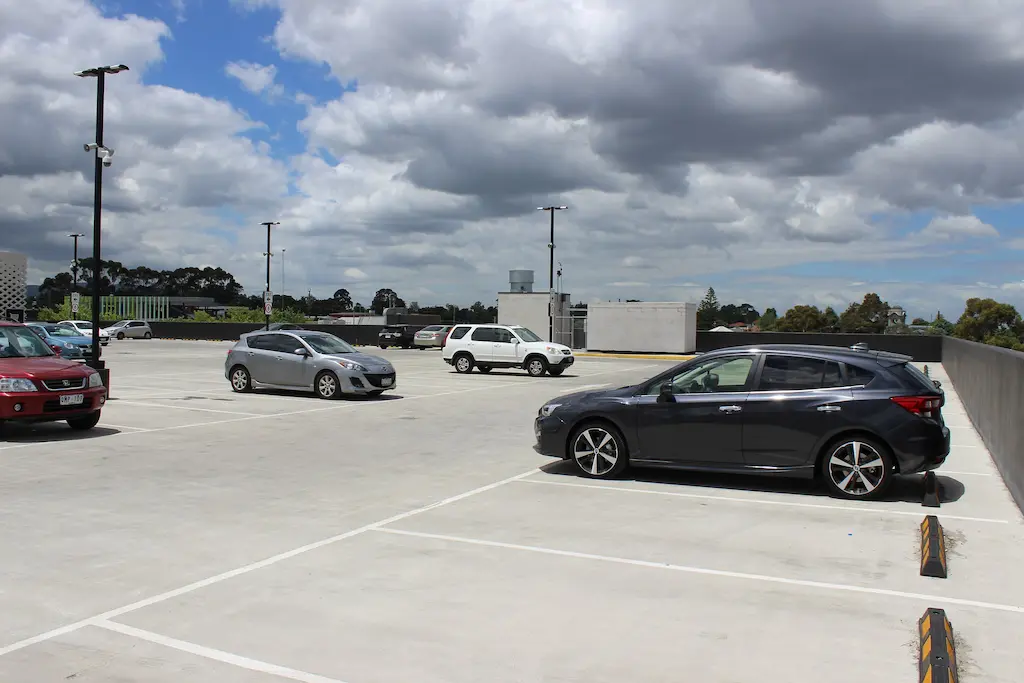
Parking Garages
Parking garages often utilize wheel stops to designate individual parking spaces and provide a physical barrier to prevent vehicles from hitting walls or other obstacles. They assist in controlling the position of vehicles and enhancing safety within the confined parking structures.
Retail Centers and Shopping Malls
Wheel stops are commonly installed in parking areas of retail centers and shopping malls to assist drivers in aligning their vehicles properly within parking spaces. They also help prevent vehicle damage to curbs, sidewalks, and other infrastructure.

Airports
Airports use wheel stops in various areas, such as drop-off zones, pick-up areas, and parking lots. These parking stops help guide vehicles into the correct position, ensuring efficient traffic flow and preventing cars from encroaching onto restricted zones or pedestrian areas.
Industrial Facilities
Industrial complexes and warehouses often have designated parking areas for employees, visitors, and delivery trucks. Wheel stops are used to mark these parking spaces and control the positioning of vehicles, ensuring efficient use of available space and preventing accidents.
Educational Institutions
Schools, colleges, and universities utilize wheel stops in their parking lots to ensure orderly parking and prevent vehicles from encroaching onto walkways or grassy areas. They assist in maintaining a safe and organized parking environment for students, staff, and visitors.
Government and Office Buildings
Government offices and large corporate complexes typically have dedicated parking areas. Wheel stops are used in these locations to define parking spaces, assist with traffic management, and prevent vehicles from obstructing pedestrian pathways or sensitive areas.
These are just a few examples of the locations where wheel stops are commonly used. The main goal is to promote safe and efficient parking practices while ensuring compliance with parking regulations and maintaining orderly parking spaces.
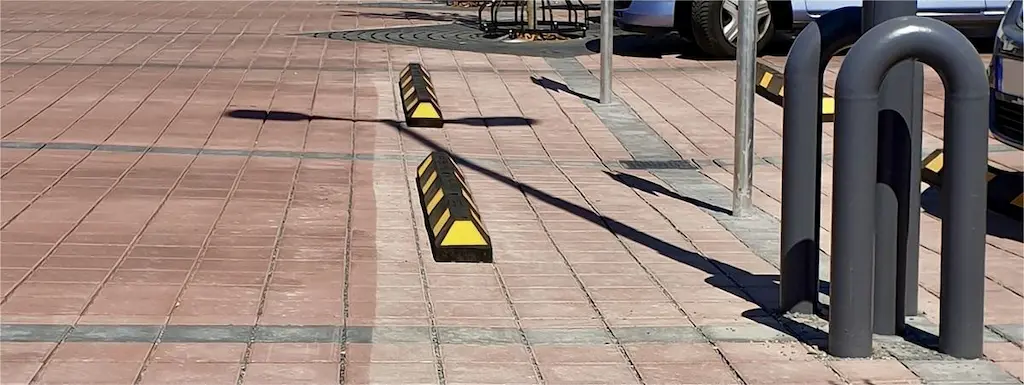
If you want to know more about this topic, feel free to discover here: Different Locations that Parking Curbs Are Mainly Used At.
The role of wheel stops in compliance with disability laws
Wheel stops are crucial in compliance with disability laws, specifically providing accessible parking spaces for individuals with disabilities.
Here’s how the wheel stops contribute to compliance:
Reserved Accessible Parking Spaces
Wheel stops are used to designate and delineate reserved accessible parking spaces. These spaces are specifically designed to provide convenient and barrier-free access for individuals with disabilities. Wheel stops help ensure these parking spaces remain clear and available for those requiring them.

Proper Positioning
Wheel stops assist in properly positioning vehicles within accessible parking spaces. They provide a physical barrier that prevents vehicles from encroaching into the adjacent access aisles or pedestrian pathways. This ensures that individuals using wheelchairs or mobility aids have sufficient space to safely enter and exit their vehicles.
Accessibility Markings
Wheel stops often have specific markings or symbols to indicate accessibility. These markings, such as the International Symbol of Access (ISA), help identify parking spaces that are designated for individuals with disabilities. The clear visibility of these markings helps drivers recognize and respect the importance of accessible parking.
Compliance with Regulations
Wheel stops are often installed and positioned according to specific regulations and guidelines outlined by disability laws. These regulations may include requirements for the dimensions, placement, and number of accessible parking spaces. By adhering to these guidelines, wheel stops contribute to compliance with disability laws and ensure equal access for individuals with disabilities.
It’s important to note that accessibility requirements and regulations vary between jurisdictions. It’s essential to consult local disability laws and building codes to ensure that the design and installation of wheel stops align with the specific accessibility standards in your area.
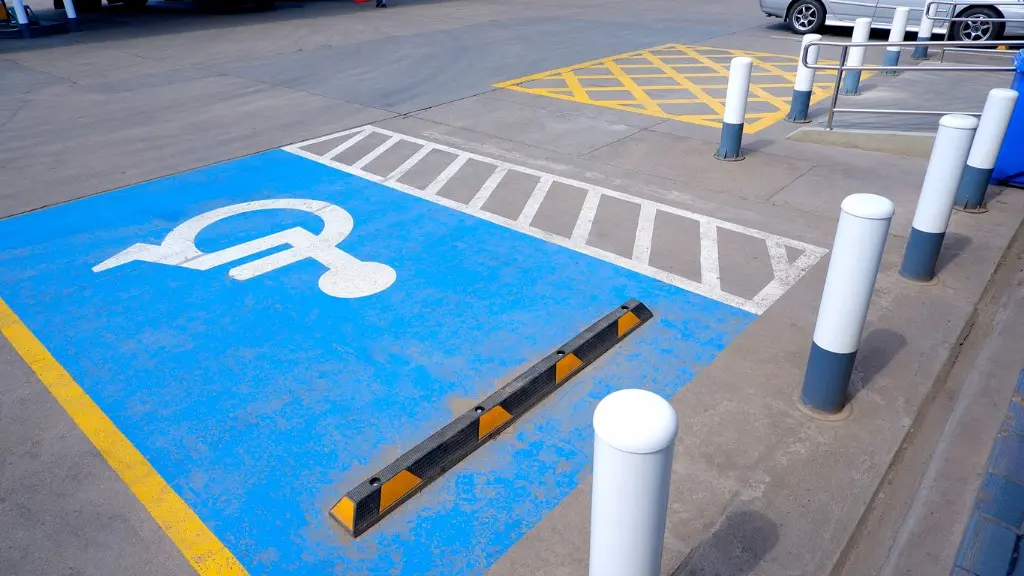
Additional factors to consider
We must consider the following essential points as well:
Parking space and layout
The size of the parking space and layout is also important when selecting a parking curb stop. The curb stop should be appropriate for the size of the car parking space and allow for enough room for parallel parking or tailgating. If the parking space is too small, a larger curb stop may be needed to prevent cars from hitting other parked vehicles or structures.
Visitor parking
If the parking facility is open to visitors, consider selecting a parking curb stop that clearly identifies visitor parking areas. Placards, license-plate readers, or signage can help direct visitors to the appropriate parking areas.
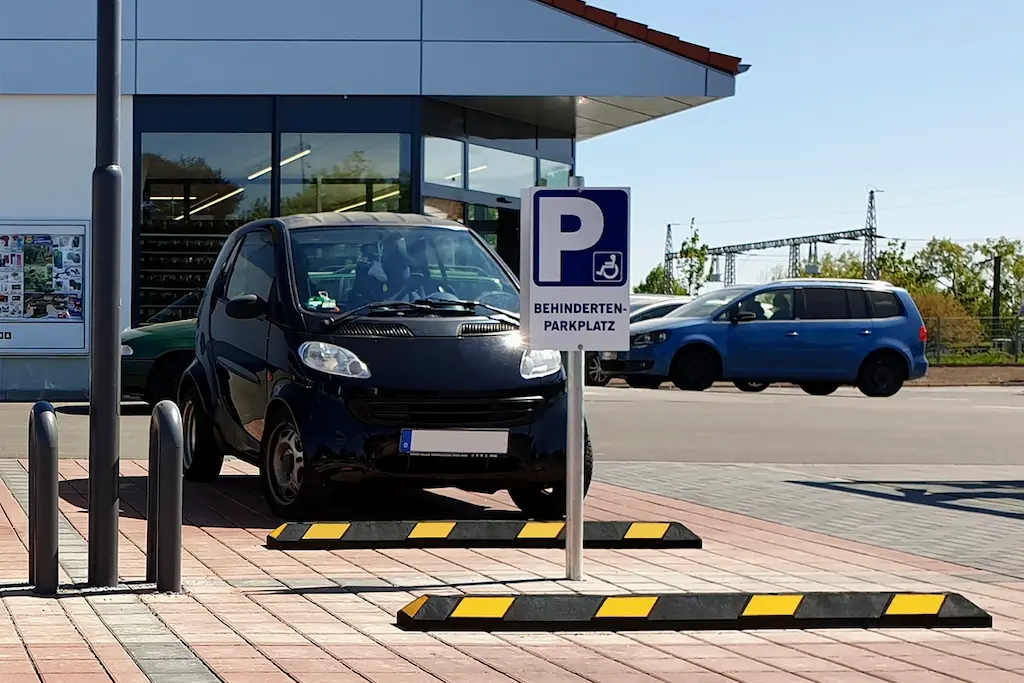
Conclusion
In conclusion, selecting the right parking curb stop is essential to ensure the parking facility’s safety, security, and convenience.
Before purchasing a parking curb stop, consider the parking regulations and rules, parking stop types and dimensions, type of parking facility, installation and maintenance, and other factors. By considering these factors, you can choose the best parking curb stop that meets your parking facility’s specific needs and requirements.
FEEL FREE TO CONTACT US
OUR FACTORY
Parking Block Direct is a well-known wheel stop manufacturing company located in Qingdao.
Since 2013, we have produced and distributed premium-quality products across different countries to help people improve vehicular and pedestrian safety in public parking lots and garages.
OUR WORLDWIDE DELIVERY
We ship our products in reliable packing worldwide. We ensure our products are delivered to your doorstep in the best possible condition for your public parking garage.
No matter where you live, contact us and learn about the shipping process, delivery date, or any other questions.
For further information, feel free to check the following pages:
hello@parkingblockdirect.com

